Fluorescent lamps stand out as an exemplary example of eco-friendliness and efficiency in a world where people are becoming more and more aware of energy usage and sustainability. This is one of the reasons we will talk about how fluorescent lighting works.
Knowing the ins and outs of fluorescent lamps may make a big difference in your lighting choices, energy savings, and environmental effect, whether you’re an electrician, facility manager, or owner of a business property.
The energy economy of fluorescent lamps is one of its best features. Fluorescent lamps can save up to 75% on electricity when compared to incandescent ones. This results in lower carbon emissions in addition to significant electricity savings.
The lifespan of fluorescent lights is longer than that of incandescent bulbs. Because of their endurance, replacing burnt-out bulbs lessens the inconvenience and the environmental damage they do.
We’ll enlighten you on the world of fluorescent lamps in this extensive guide, covering everything from their background to their different varieties, choosing the right fluorescent lamps, and the critical focus on sustainability and energy efficiency.
Table of contents
- What is a Fluorescent Lamp?
- Different Types of Fluorescent Lighting
- What Can Fluorescent Lamps Be Used for?
- How Does Fluorescent Lighting Works?
- How to Choose the Right Fluorescent Lamps
- Which Colour Temperature Should You Pick?
- Compare Fluorescent Lamps
- How to Fit a Fluorescent Lamps Safely
- FAQs – How Fluorescent Lighting/ Lamps works
- Conclusion
- References
- Recommendations
What is a Fluorescent Lamp?
Fluorescent tubes, often called fluorescent strips or tube lights, are mercury vapour gas-discharge tubes that operate at low pressures to transform fluorescence into visible light.
A short-wave ultraviolet light appears as a result of the electric charge used in this technique to activate mercury vapour. The tube’s phosphor coating then glows as a result.
Compared to incandescent lamps, fluorescent tubes have the advantage of having far higher energy efficiency.
Also, they are reasonably priced and, while not as long-lasting as LEDs, they do have a decent lifespan. Numerous residential and commercial applications call for the usage of fluorescent bulbs.
You can read this: How Pilot Lights Work | Thing you don’t know
Different Types of Fluorescent Lighting
Since fluorescent tubes were originally introduced and commercially patented in 1939, several varieties have been manufactured. The form, power, rating, length, colour, and other lighting features of these tubes vary.
So, it’s crucial to choose fluorescent tubing carefully, taking your interior space’s design and lighting needs into account.
T2 Fluorescent Tubes
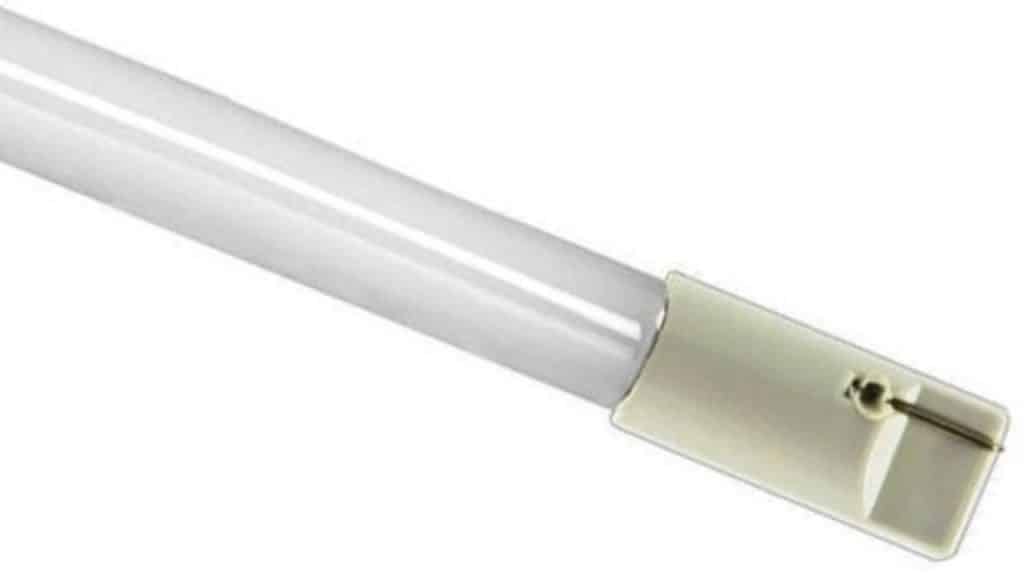
These tiny tubes contain 7mm (0.275-inch) diameter bulbs inside of them. They have an axial base that is appropriate for lighting display cases, under cabinets, and display backlights, and they enable fast connection.
Compared to T5 substitutes, the T2 fluorescent tubes are more durable. But you have to make sure they are connected to electronic ballasts designed specifically for T2 fluorescent lights.
T4 Fluorescent Tubes
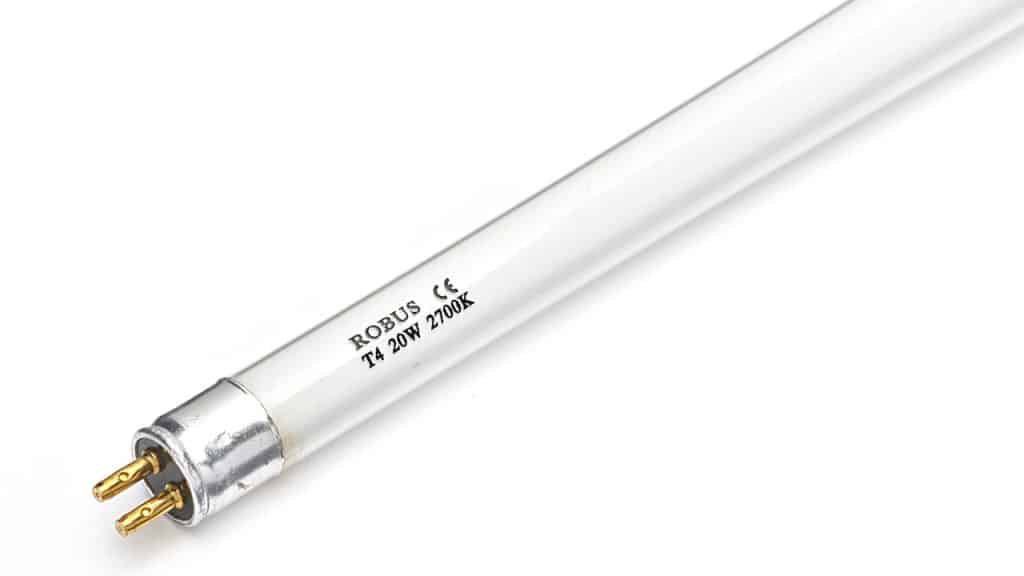
The T4 fluorescent tube boasts an especially slender form, and its compact dimensions provide effortless installation. They are frequently used for work surface lighting and kitchen displays.
Furthermore, these tubes have a cool white tint and can be used in many different ways. T4 tubes are a great value and have a high level of energy efficiency. It is anticipated that they will live for about 10,000 hours.
Also, read this: How to Repair an Oven: Tips and Guidelines
T5 Fluorescent Tubes
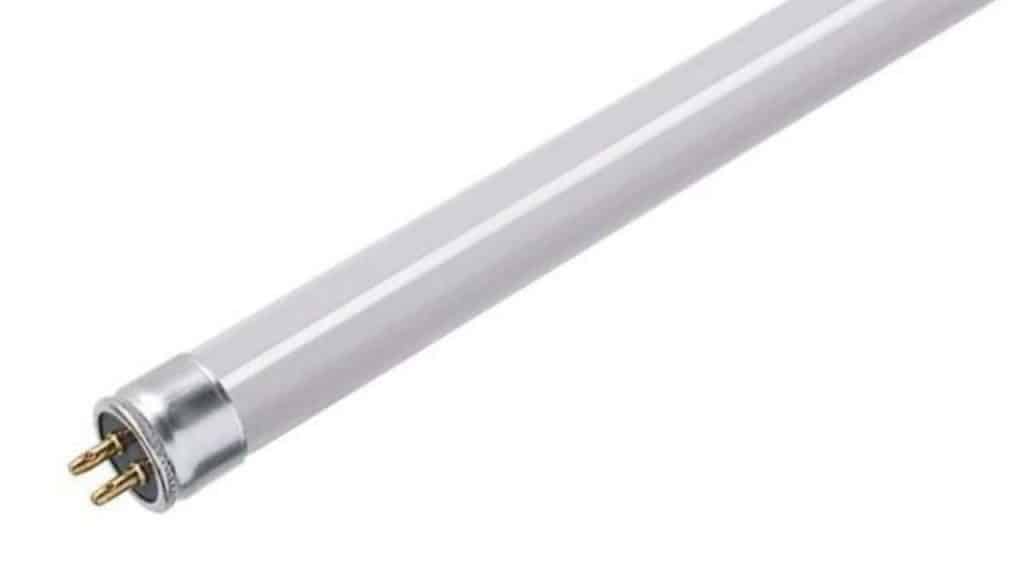
T5 fluorescent bulbs are appropriate for lighting comparable situations such as supermarkets, businesses, and schools. They are a great way to save money, especially considering that their anticipated lifespan is up to 30,000 hours.
Additionally, T5 tubes have an environmentally friendly coating on the inside of the glass that successfully stops mercury from seeping into the phosphors. In the 1990s, longer T5 tubes were made available throughout Europe.
Rather than using the 305mm (12 inches) imperial foot, the 300mm (11.8 inch) “metric foot” was used as the basis for the design of these extended tubes.
These fluorescent tubes’ ballasting keeps overloading from happening and enables the incorporation of functions like planned, fast, and instantaneous starts.
T8 Fluorescent Tubes
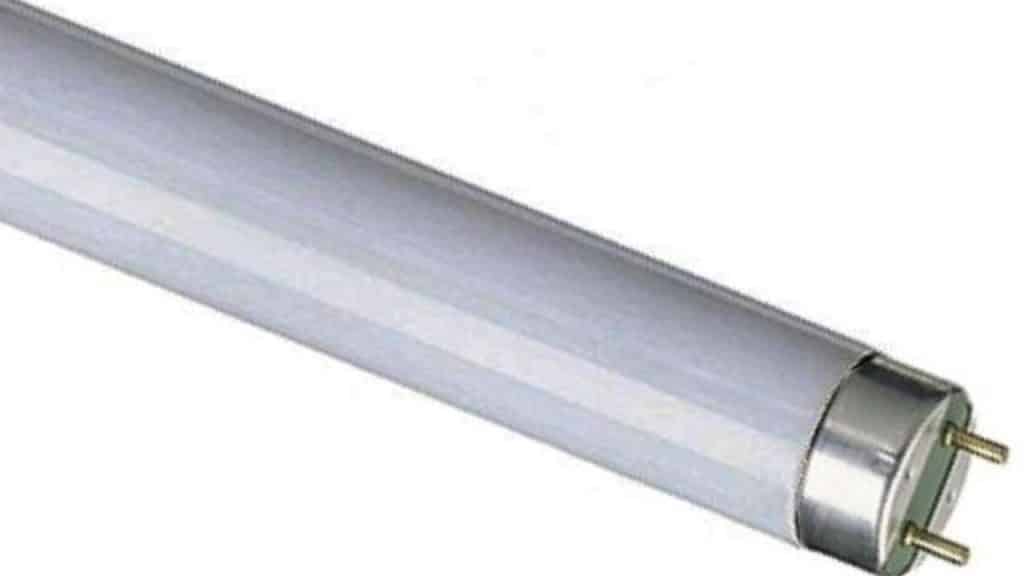
Because they emit a lot of light, these fluorescent tubes are employed in a lot of residential and business settings. These tubes offer exceptional energy efficiency well with remarkable colour rendering capabilities.
Seasonal affective disorder (SAD) has also been successfully prevented and treated with the light emitted by T8 fluorescent tubes.
T12 Fluorescent Tubes
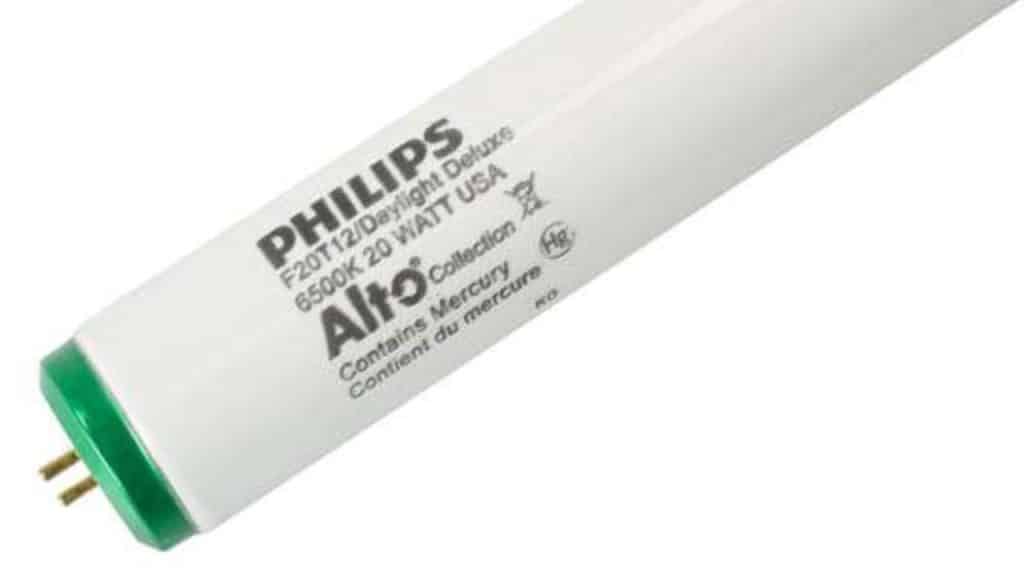
In 2012, T12 fluorescent tube production came to an end. Compared to other kinds of fluorescent tubing, these tubes are different in wattage and have a diameter of 38 mm (1.49 inches).
The Environmental Protection Agency (EPA) has recommended swapping out T12 fixtures for more energy-efficient models that consume less mercury and fossil fuel.
So, because T8 LEDs provide light and use less energy than T12 fluorescent tubes, you can decide to swap them out for them.
Check this: How to Do Home Electrical Repairs on Your Own: Full Guide
Circular Fluorescent Tubes
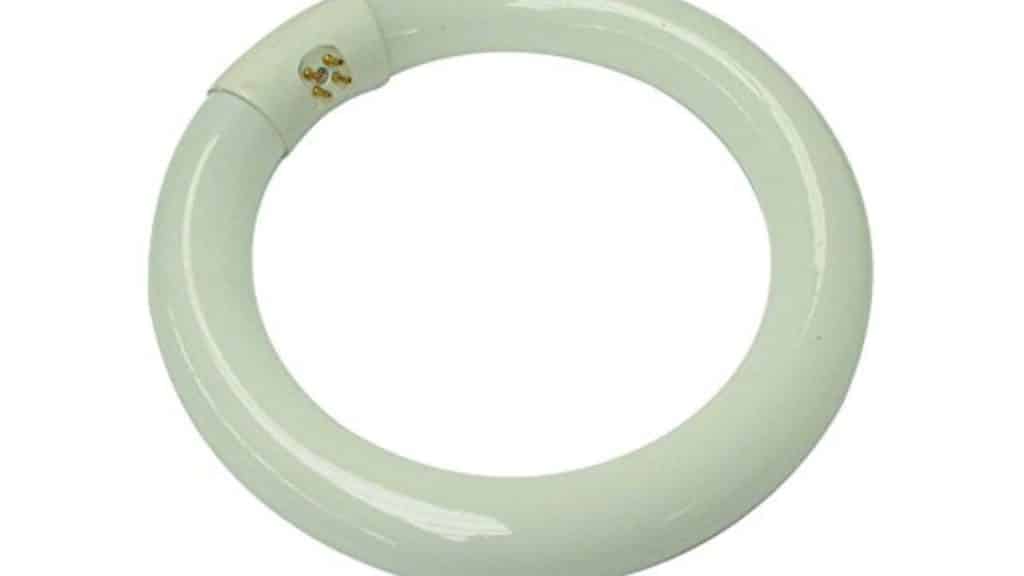
Lighting designers frequently utilise round fluorescent tubes, which come in T5 (15mm diameter), T6 (20mm diameter), and T9 (29mm diameter) forms, to create well-lit interior areas.
These fluorescent tubes are the best choice for ceiling lighting because of their slimline shape and outstanding energy efficiency. Only current circular fluorescent tube fixtures are compatible with round fluorescent bulbs.
What Can Fluorescent Lamps Be Used for?
There are many different sizes and forms of fluorescent lamps and tubes available. In recent years, the small fluorescent light has become increasingly popular.
The auxiliary electronics are frequently built into the lamp base, making it compatible with standard lightbulb sockets.
In other words, the following areas can be lit with fluorescent tubing installed:
- Residential rooms
- Storage areas
- Commercial office spaces
- Parking garages
- Retail stores
How Does Fluorescent Lighting Works?
Fluorescent lighting work based on the principle of fluorescence and the generation of ultraviolet (UV) light. Here’s a simplified explanation of how they operate:
- Gas Filling: Fluorescent lamps are filled with a small amount of mercury vapor and an inert gas, typically argon.
- Electrical Current: When an electric current flows through the lamp’s electrodes at each end, it ionizes the mercury vapor and generates ultraviolet (UV) light. Also, this is one of the reason fluorescent lamps work
- UV Light Production: The UV light is invisible to the human eye, so it’s not directly useful for lighting a room.
- Phosphor Coating: The inside of the fluorescent tube is coated with a phosphor powder. This powder absorbs the UV light and re-emits it as visible light. The color of the visible light depends on the specific phosphor coating used. Different phosphors produce different colors, allowing for a range of light colors to be produced by fluorescent lamps.
- Visible Light Emission: As the phosphor coating emits visible light, the lamp effectively produces the desired illumination for a given application.
How to Choose the Right Fluorescent Lamps
Because fluorescent lamps have a long lifespan and low running costs, installing them can save a substantial amount of money.
Additionally, these lights will have higher lighting levels than conventional incandescent light bulbs. Fluorescent tubing is appropriate for a broad range of residential and commercial uses, as was previously noted.
The length, colour rendering, and tube diameter should all be taken into consideration while making a purchase.
Using fluorescent tubing, the following colour variants are possible:
- Warm white
- White
- Cool white
- Natural
- Daylight
Also, check this: How to Run Your House Solely on Solar Power | Starter Guide
Fluorescent Lamp Choices by Wattage
On the fluorescent tube, the wattage will be displayed following the letter F. For instance, the number F24T8 will correspond to a F8 tube that has 24 watts.
The wattage of the fluorescent tube will also depend on the amount of light production.
Furthermore, a 4-watt fluorescent tube with a conventional ballast will have an efficiency of about 16 lumens per watt, while a tube with a contemporary electronic ballast will have an efficiency of over 100 lumens per watt.
The temperature of the bulb at its coldest part has an impact on the amount of light that the fluorescent tube emits as well.
Fluorescent Lamp Choices by Size
The measurement of fluorescent tubes is taken from pin to pin at the tube’s end, and it is expressed in eighths of an inch. The fluorescent tube’s length affects the wattage level.
Fluorescent tubing comes in sizes ranging from T2 to T17. The biggest size T12 (38mm) is no longer being produced.
They did, nevertheless, have the same G13 cap as the T8 tube. This implies that a more effective T8 tube of the same length can be used in place of the T12 tube.
See also: 10 Best and Efficient Projectors For Schools In 2023
Which Colour Temperature Should You Pick?
The proper selection of fluorescent lamp will depend on both colour temperature and colour rendering index.
Also, the warmth of the light is reflected in the colour temperature. Cooler tones will appear comparatively bright, while warmer tones will appear yellowish.
Typical variations in colour temperature consist of:
- 2700k is a colour temperature that is classified as extra warm white and is commonly seen in fluorescent tubes intended for home use.
- Fluorescent tubes with a colour temperature of 3000k, sometimes referred to as warm white, have illuminating characteristics similar to halogen lamps.
- 3500k: This colour temperature, which falls into the bulk standard white group, is thought to be appropriate for a broad range of commercial applications.
- 4000k is a cold white colour that is commonly used on business buildings. It is also thought to be appropriate for formal home offices between 5400 and 6500k since the light produced at this temperature has a distinctly bright appearance. It might aid in reducing seasonal affective disorder symptoms.
The colour rendering index shows how easily colours may be differentiated when various light sources are applied.
A lightbulb with approximately 80 CRI could be appropriate for typical home uses. But, considering the requirement for high light levels, you should make sure the bulb is fitted with a CRI of 90 or above.
Related post: 10 Best Tools For Gardening | Best Tools
Compare Fluorescent Lamps
It could be difficult to choose the fluorescent tube type that best fits your needs because there is such a large variety available.
However, the following should also influence your purchase decision: the type of socket, diameter, wattage, length, colour coding, and ballasting.
Type of Fluorescent Lamp
Fluorescent tubes come in a variety of styles, from the contemporary T2 to the vintage T12. The W4.3 fitting and the 4.3 mm wide push fitting are features of the slim-line T2 tubes.
T4 tubes have a G5 fitting with a 5mm gap between the two pins, making them ideal for under-cabinet lighting. The G13 fitting on standard T8 tubes has a 13mm pin spacing.
Since the T12 tubes and T8 tubes share the same G13 cap, T8 tubes can be used in place of older T12 tubes.
Wattage of Fluorescent Lamp
You should be aware that watts refers to the quantity of energy used, whereas lumens specifically measure the entire amount of light output by the light source.
Read also: Best Accredited Electrical Engineering Schools in Florida | Ranking
Length of Fluorescent Lamp
As mentioned before, the total distance between the two end pins can be used to determine the length of a fluorescent tube. Wattage is a standard indicator of these tubes’ lengths.
The T2 fluorescent tube is the smallest available, measuring between 250 and 760 mm in length. The T4 tube is the next longest, having a total length that ranges from 150 to 1,500 mm.
Also, the T5, which has a length of between 340 and 1,800 mm, comes next. The T8 tube’s length can range from 600 to 2,400 millimeters.
Typical Applications of Fluorescent Lamp
Different types of fluorescent tube can be utilized to illuminate commercial, residential, and industrial structures. In any situation, they produce a lighting type devoid of shadows.
The type of fluorescent tube most frequently used in commercial and industrial settings is the T8 model. In residential buildings, many kinds of tubing are utilized to illuminate cabinets, beams, and coves.
How to Fit a Fluorescent Lamps Safely
When installing a fluorescent tube, great caution must be used. First things first, you need to cut the electricity to the fitting. Avoid making any touch with the earthed elements or fittings.
It will be required to start by taking out the case so that it may be stored in a secure location.
So, to get the tube out of the light fitting, carefully twist it 90 degrees. The short metal prongs should be inserted into the appropriate holes before attaching the new fluorescent tube. After that, carefully twist the replacement bulb 90 degrees.
Related post: Top 10 Careers in Physics that are Marketable in 2023
FAQs – How Fluorescent Lighting/ Lamps works
Because fluorescent bulbs vary in type and performance, there will be some variance in the lumens they produce. Most fluorescent bulbs, on the other hand, provide 45 to 100 lumens per watt. Then, one could anticipate that a 20-watt tube would produce 90–100 lumens. The operating costs are directly impacted by the wattage and brightness levels.
The cost of fluorescent light bulbs varies significantly. Generally speaking, though, you should budget less than £8 for each bulb.
The size is the primary distinction between a fluorescent tube and a bulb. The fluorescent light bulb is shaped differently from other light bulbs, and it needs a specific technology to fit into a regular light socket. It is also typical for fluorescent tubes to have the lightbulb and ballast connected. Each provides a respectable degree of energy economy.
Because fluorescent tubes contain mercury, they are considered hazardous trash. It is important to exercise caution when disposing of waste in order to adhere to legal and environmental regulations. It’s crucial to turn off the electricity before removing a fluorescent tube. After that, towelling or paper can be used to wrap the tube to keep it from breaking. After that, the tube can be recycled or disposed of as hazardous waste in compliance with the law.
The best choice for seeing a good degree of detail is the T8 fluorescent tube. Property regions and objects can be fully displayed thanks to the high degrees of colour rendering.
Conclusion
Fluorescent lights come in a variety of colour temperatures and offer sufficient brightness, so you may customize the lighting to perfectly suit the mood of your room.
They are appropriate for activities requiring precise colour perception because they provide good colour rendering.
The fact that fluorescent lighting contribute to environmental sustainability is maybe one of the strongest arguments in favor of using them.
Furthermore, their lower energy use immediately results in lower carbon emissions, which contributes to the fight against climate change and lessens the demand on the planet’s limited resources.





